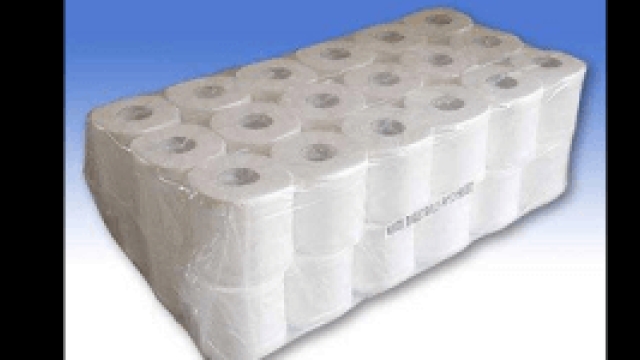Have you ever wondered how that humble roll of toilet paper is made? We rely on it every day without giving much thought to the intricacies of its manufacturing process. Well, get ready to explore the fascinating world behind the scenes of toilet paper production. In this guide, we will unravel the secrets of this essential household item, shedding light on the paper manufacturing techniques and the journey from pulp to finished products. So, let’s dive in and uncover the fascinating world of toilet paper manufacturing!
1. The History of Toilet Paper

Toilet paper has come a long way since its inception. In ancient times, people used a variety of materials to clean themselves after using the bathroom, such as leaves, moss, and even seashells. However, it wasn’t until the 6th century AD in China that the concept of paper was first invented by Cai Lun, leading to the eventual emergence of toilet paper.
Before the mass production of toilet paper, different cultures had their own unique methods for cleanliness. For example, in medieval Europe, straw, hay, or wool were commonly used, while in ancient Rome, wealthy citizens had access to a communal sponge on a stick, which was rinsed and shared among individuals.
Fast forward to the 19th century, when modern toilet paper as we know it today started to take shape. In 1857, Joseph Gayetty introduced the first commercially available toilet paper in the United States. His product was made from hemp fibers and offered a more comfortable alternative to other materials.
It wasn’t until the late 19th and early 20th centuries that toilet paper became widely available and affordable. The Scott Paper Company, founded in 1879 by the Scott brothers, played a significant role in the evolution of toilet paper. They were the first to introduce perforated toilet paper on a roll, a design that made tearing off individual sheets much easier. This innovation revolutionized the way toilet paper was used and provided convenience and efficiency to households everywhere.
The history of toilet paper is a testament to humanity’s constant pursuit of finding better, more hygienic ways to ensure personal cleanliness and comfort. From leaves and seashells to hemp and perforated rolls, the evolution of toilet paper mirrors our ongoing efforts to improve and refine the products we use in our daily lives.
2. The Process of Toilet Paper Manufacturing
Toilet paper manufacturing involves a series of steps that transform raw materials into the soft and essential product we use every day. Let’s take a closer look at the fascinating process behind the scenes.
First, the process begins with the selection of high-quality paper materials. Wood fibers from trees are commonly used, along with recycled paper. These fibers are carefully chosen to ensure the desired texture and durability of the final toilet paper product.
Once the raw materials are gathered, they go through a pulping process. This involves shredding the fibers into tiny pieces and mixing them with water to create a pulp mixture. This pulp mixture is then cleaned and screened to remove any impurities such as debris or ink.
Next, the refined pulp undergoes a process called papermaking. The pulp is poured onto a moving wire mesh, where excess water drains away and the fibers start to bond together. Over time, the water content is further reduced, and the fibers become interlocked, forming a continuous paper sheet.
After the paper sheet is formed, it goes through a series of pressing and drying stages. These steps help remove the remaining moisture and enhance the strength and smoothness of the paper. The paper is then wound onto large rolls for further processing.
In the final stage, the large rolls of paper are taken to a converting machine, which cuts the paper into individual toilet paper rolls. The rolls are then perforated and packaged, ready to be shipped to stores and households around the world.
And there you have it, a glimpse into the intricate process of toilet paper manufacturing. From the selection of quality materials to the cutting and packaging of the final product, every step ensures that we have access to the essential item we often take for granted.
3. Innovations in Toilet Paper Production
In recent years, the toilet paper manufacturing industry has seen significant advancements in technology and innovation, leading to more efficient and environmentally-friendly production methods. These innovations have revolutionized the way toilet paper is made and have contributed to the overall improvement of the industry.
Bulk Facial Tissue
One major innovation in toilet paper production is the shift towards sustainable sourcing of raw materials. Manufacturers are increasingly using recycled paper and alternative fibers, such as bamboo, to produce toilet paper. This not only helps in reducing deforestation but also promotes the use of renewable resources. Additionally, advanced recycling processes have been developed to ensure that the recycled paper used in toilet paper production meets the required quality standards.
Another notable innovation is the development of high-speed paper machines. These state-of-the-art machines have significantly increased the production capacity of toilet paper manufacturing plants. With faster production speeds, manufacturers are able to meet the growing demand for toilet paper more effectively. Moreover, these machines are designed to minimize waste and optimize the use of resources, resulting in a more sustainable production process.
The third key innovation in toilet paper production is the introduction of advanced embossing techniques. Embossing refers to the process of creating patterns or textures on the surface of toilet paper. This not only enhances the visual appeal of the product but also improves its functionality by adding extra softness and absorbency. Modern embossing techniques allow for intricate designs and customization options, giving manufacturers the ability to cater to different consumer preferences.
In conclusion, the toilet paper manufacturing industry has experienced remarkable innovations in recent years. Sustainable sourcing practices, high-speed paper machines, and advanced embossing techniques have transformed the way toilet paper is produced. These advancements have not only made production more efficient but have also contributed to the industry’s goal of reducing waste and promoting environmental sustainability.
















